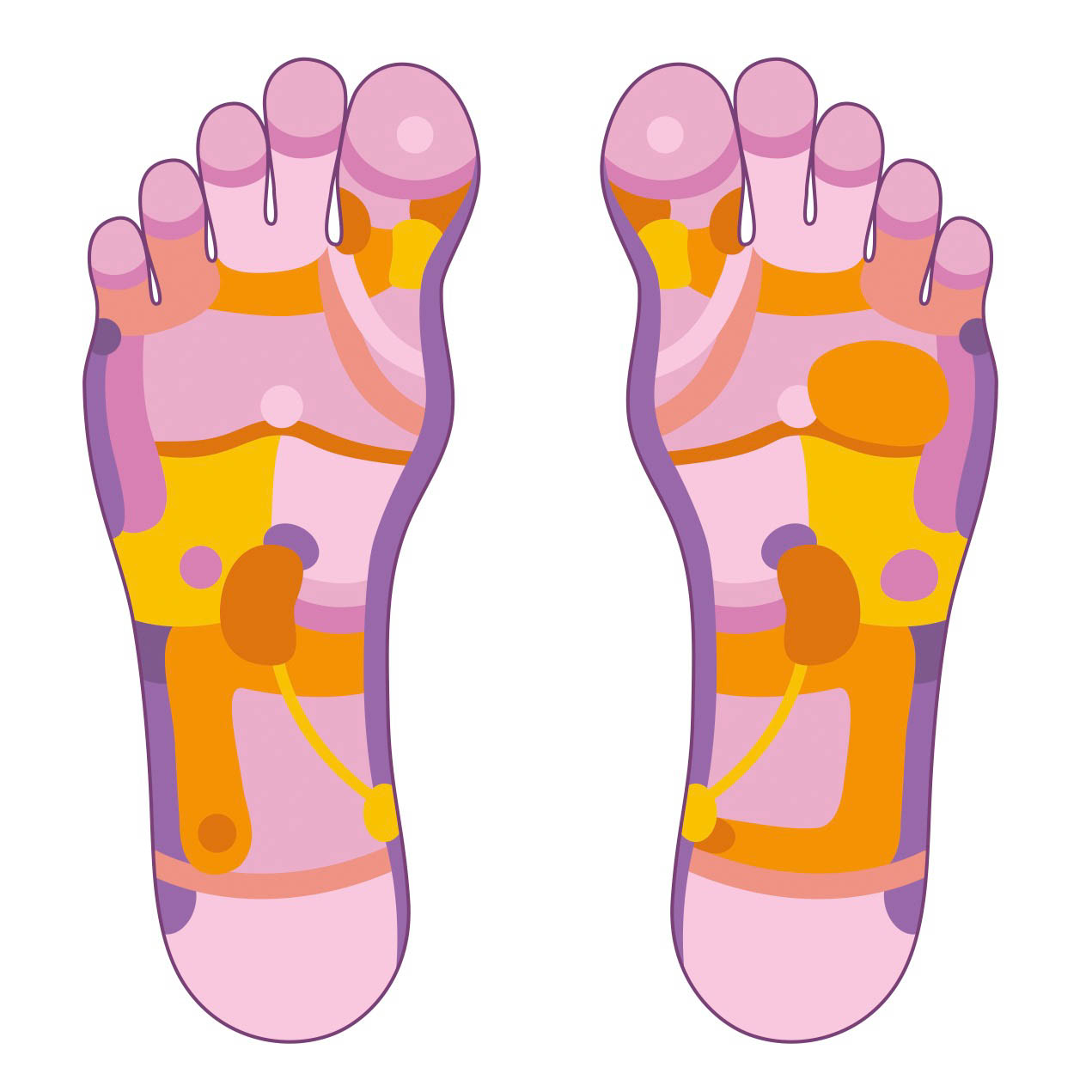How Reflexology Works

Did you know some of your body parts can represent your entire body?
Reflexology is the use of a body part including the ears, feet, hands and face as a mirror of the body. These body parts are all microsystems, meaning you can treat anything in the body using them. There are different areas on these body parts that correspond to the body’s organs and energetics. By applying pressure to these areas, you are stimulating the body’s peripheral nervous system, which then sends signals to the central nervous system where different parts of the brain are activated and the body will respond accordingly.
Reflexology itself is over 5,000 years old. The first artifacts containing information about reflexology came out of Egypt. It seemed to be a common treatment for certain ailments.
Similar to acupuncture, reflexology uses some of the same principles. However, reflexology practitioners use their hands instead of needles. The zones of the feet corresponding to different organs and areas of the body are more complex than the location of the meridians on the feet. It is really fascinating to look at a reflexology chart of the bottoms of the feet and perhaps even more fascinating to have foot reflexology done and notice which areas on the feet are tender or sore.
One of the main benefits of reflexology is increased circulation in the body. Using reflexology gets you out of fight or flight, calming both your nervous system and body. It is a fantastic way to release overall tension in the body and give yourself a nice reset.
People commonly seek reflexology today for stress, headaches, vertigo, injuries and PMS. Really, the reasons are endless. It is another modality to have in your toolbox when you feel out of balance.

What personally made a believer out of me was going to a reflexologist for neck pain. Using my big toe, the therapist was able to check in on the state of my spine and release the tension. The different joints on your toe correspond to and mirror your cervical, thoracic and lumbar spines. In fact, before he started working on my toes, I had not told him what brought me there. He was able to guess, correctly, and provide me relief. That intrigued me and, as an acupuncturist, I wanted to learn more. I learned about magnet reflexology cupping and became easily hooked.
You see, your blood is slightly negatively charged, so when you use powerful magnets, you can influence blood flow easily. Negative magnets are sedating while positive ones are stimulating. Don’t try this at home because refrigerator magnets will not do the trick. These are about 100 gausses in strength. Therapeutic magnets start at about 1,200 gausses in strength. Using these on the feet or hands in specific areas can help lower inflammation (negative magnets) and stimulate new blood flow or stimulate an area that is deficient (positive magnets).
For example, if someone is having an overactive immune response like allergies, you would want to sedate the area of the foot corresponding to the lungs. If someone has an underactive immune response, like they are chronically fatigued or recovering from an illness, you would want to stimulate most areas of their feet. When you do this, the effects are really quick. Patients will leave the table feeling either completely relaxed, in the case of sedation, or with the amount of energy that they were needing, in the case of stimulation. Magnets are one simple thing to add to any reflexology treatment.
I would say the best thing to do if you are curious is to give it a try! There are so many incredibly modalities out there that are not widely talked about the way western medicine is. There are so many opportunities for incredible healing and a chance to better understand your body and its symptomology. Anything that happens in your body is your body’s way of telling you something and sending a message. Your body is brilliant and is communicating with you; it is so important to learn how to listen.
Some people shy away from foot reflexology specifically because they are ticklish. Oftentimes, being ticklish is a nervous system response and can go away over time. Especially if you are working with a skilled therapist who is targeting your nervous system, giving you the chance to completely relax and surrender to the experience. All in all, reflexology is a big YES for me!
About the Author

Dr. Isabel Meijering is an acupuncturist in Austin and is the owner of Admiring You Wellness. She has her doctorate in acupuncture and Chinese herbal medicine and specializes in cupping therapy, pain management, psycho-emotional support, menstruation support and allergies. She also has a B.S. in biomedical sciences with a minor in psychology and has a deep love for both eastern and western medicine.






